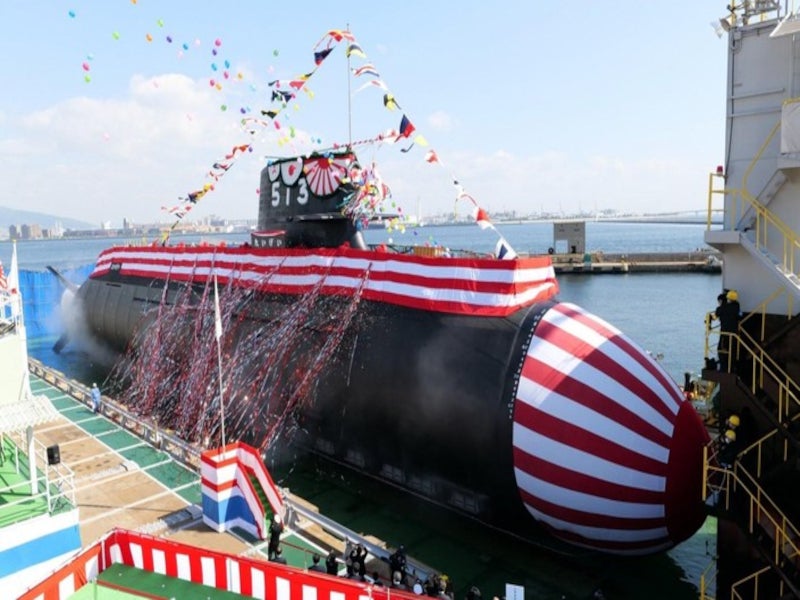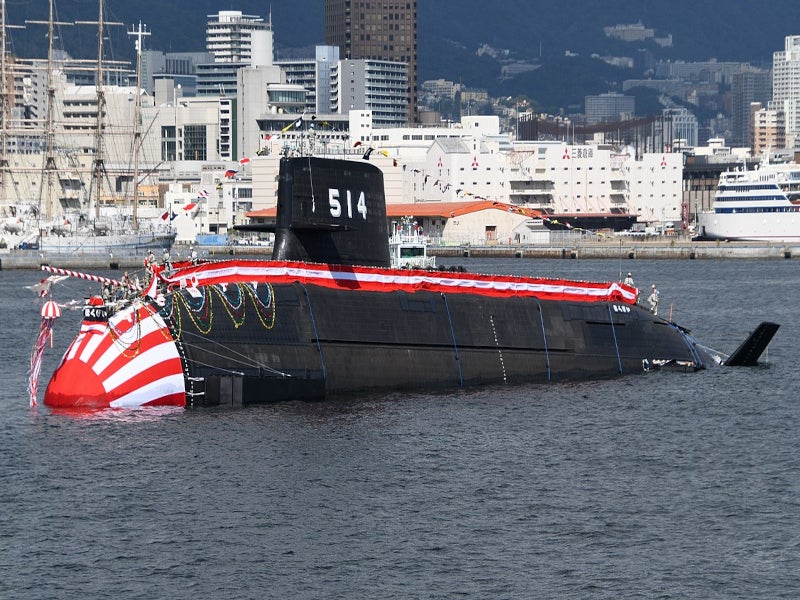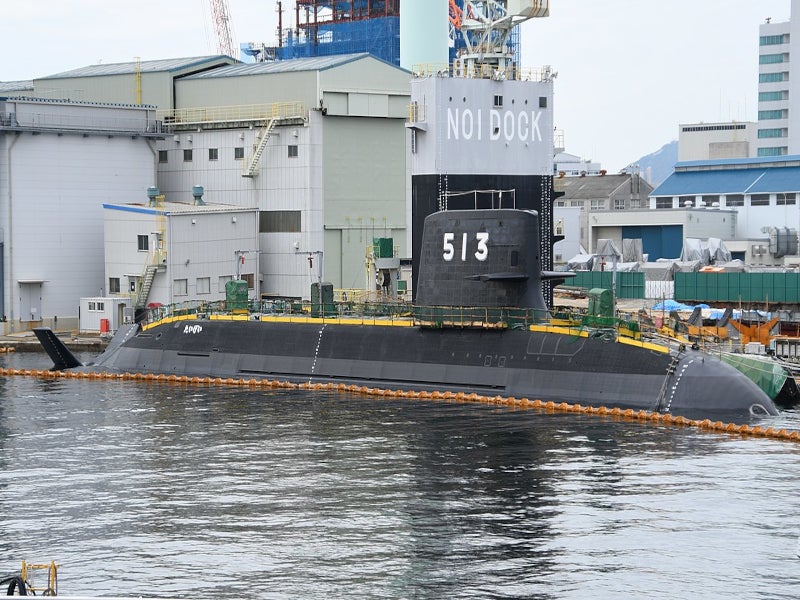The Taigei-class submarines are a series of attack submarines being developed for the Japan Maritime Self-Defense Force (JMSDF).
The new class was preceded by the Soryu-class submarines. The 12th and final submarine of the Soryu class was commissioned in March 2021.
The first Taigei-class submarine, JS Taigei (SS-513), was built at the Mitsubishi Heavy Industries shipyard in the city of Kobe, Japan, while the second vessel, JS Hakugei (SS-514), is being built at the Kawasaki Heavy Industries’ Kobe shipyard.
The lead submarine of the class, JS Taigei was ordered in 2017, and its keel-laying ceremony was performed in March 2018.
Developed at a cost of about JPY80bn ($690m), the vessel was launched in October 2020 and entered service with the JMSDF in March 2022. The vessel is deployed at the Yokosuka Naval Base in the Kanagawa Prefecture.
Construction of JS Hakugei commenced in January 2019, while its launch took place in October 2021. The vessel is expected to be commissioned in March 2023.
The Japanese Ministry of Defense (MoD) allocated funds to build four more Taigei-class submarines. The sixth submarine received JPY73.6bn ($641m) under the 2022 budget.
Taigei-class submarine design and features
The Taigei-class submarine has a length of 84m, draught of 10.4m, beam of 9.1m and displacement of 3,000t. It can accommodate a crew of 70 personnel.
The X-shaped rudder of the submarine enables enhanced submerged operations and propulsion performance.
The submarine is designed with new acoustic absorbent materials and a floating floor structure to ensure quiet operation. The vessel’s pressure hull, made of high-strength steel, provides high water pressure resistance.
The advanced hull structure provides increased stealth capabilities, which reduce the chances of enemy forces discovering the ship.
The vessel also features a range of automated systems. A submarine snorkel is fitted to the ship to enable it to operate submerged while taking in air from the surface and clearing the exhaust.
Armament
The Taigei-class submarines are equipped with six HU-606 533mm torpedo tubes, which can launch Mitsubishi-built Type 89 heavyweight homing torpedoes, to undertake anti-submarine operations, as well as UGM-84 Harpoon anti-ship missiles.
Protection and survivability features of the ship include torpedo countermeasures to escape enemy torpedoes.
Engines and propulsion
The Taigei-class submarines are equipped with a single-shaft diesel-electric propulsion system.
Each ship is powered by two Kawasaki 12V 25/25 SB-type diesel engines and an electric propulsion motor.
As with the last two of the 12 Soryu-class vessels, Oryu (SS 511) and Toryu (SS 512), developed for the JMSDF, the Taigei-class submarines are also fitted with lithium-ion batteries instead of lead-acid batteries.
The lithium-ion batteries provide a higher power output, which increases the submarines’ speed and range when compared to conventional diesel-electric submarines.
The lithium-ion batteries also increase the underwater endurance of the submarine by allowing it to turn off its diesel-electric propulsion system and run completely on battery power. Furthermore, the lithium-ion batteries are expected to require less maintenance and provide fast-charging capabilities.
On-board sensors and radars
The Taigei-class diesel-electric attack submarine features a high-performance sonar system for enhanced surveillance and detection capabilities.
The submarine’s combat management system (CMS) uses information collected from on-board sensors for weapon engagement.
The ZPS-6F surface/low-level air search radar fitted in the vessel helps to detect enemy anti-submarine warfare platforms and maritime patrol vessels. The ship is also fitted with a towed array sonar.
Contractors involved
Japanese storage battery manufacturing company GS Yuasa supplied lithium-ion storage batteries for the Taigei-class submarines.










